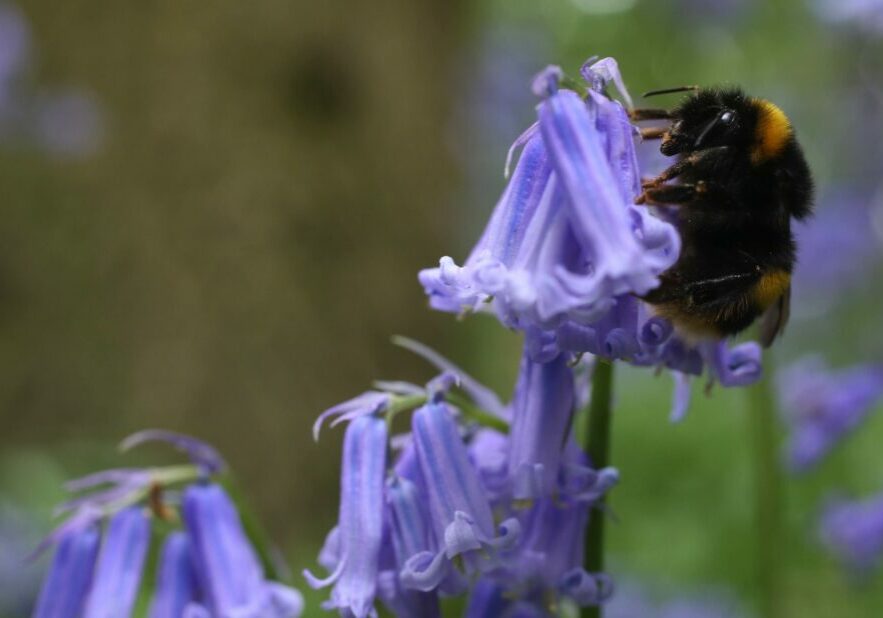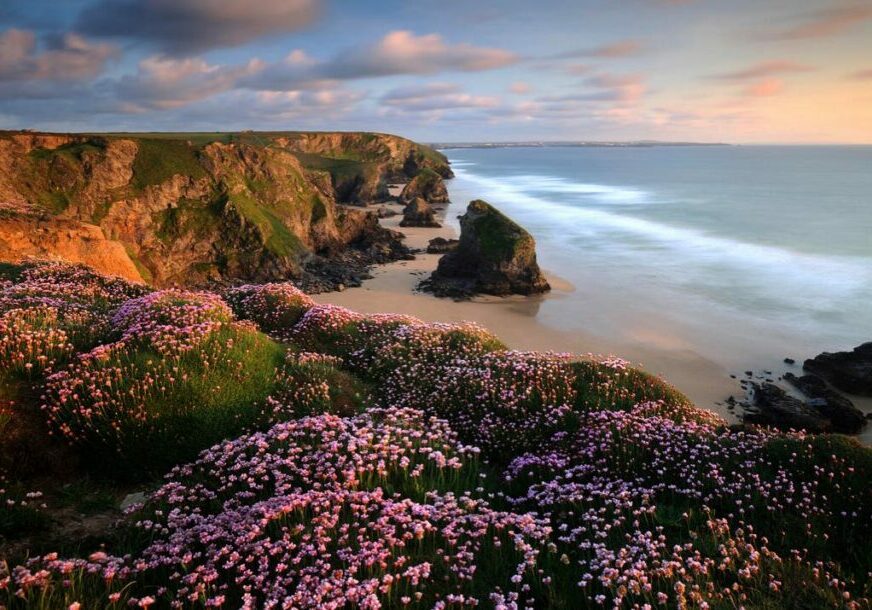The Atlantic puffin, one of the world’s most loved seabirds, is known for its bright bill, comical waddle and inquisitive nature. These distinguishing characteristics have drawn people from all over the world to the UK to try their hand at puffin photography.
It’s easy to see why photographers love these endearing birds. But however well a species has been documented, there’s always a new image to be captured. Here, award-winning wildlife photographer Kevin Morgans shares some expert advice on how to photograph puffins.
Kevin’s new book, Puffins: Life on the Atlantic Edge, showcases these iconic seabirds. “My hope is that, through this book, the charm and worth of the puffins will become celebrated beyond the communities of naturalists and birdwatchers,” he says. “And that their future will become, against current expectations, ever more assured.”
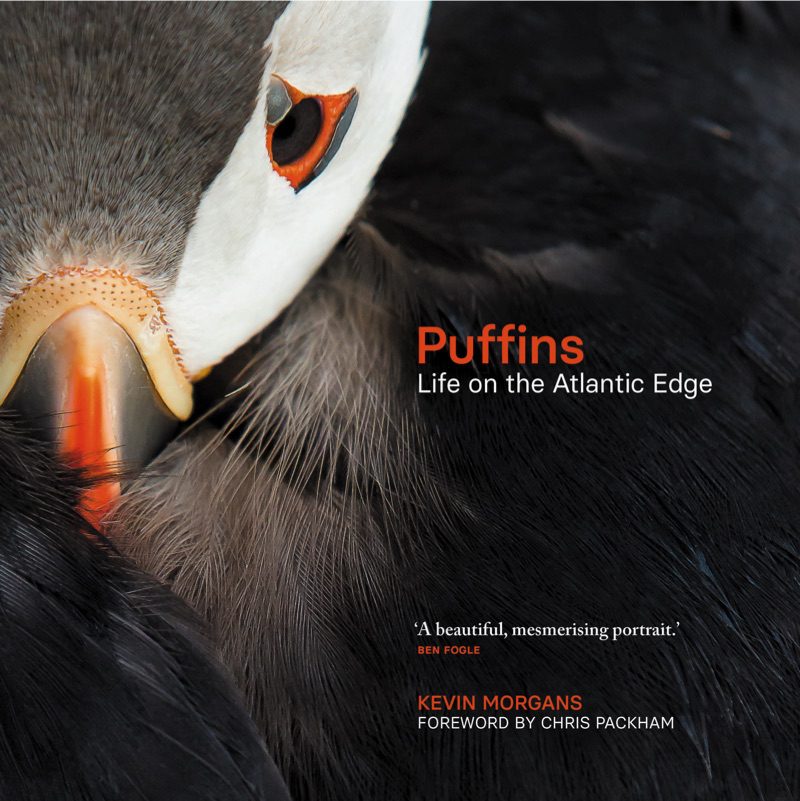
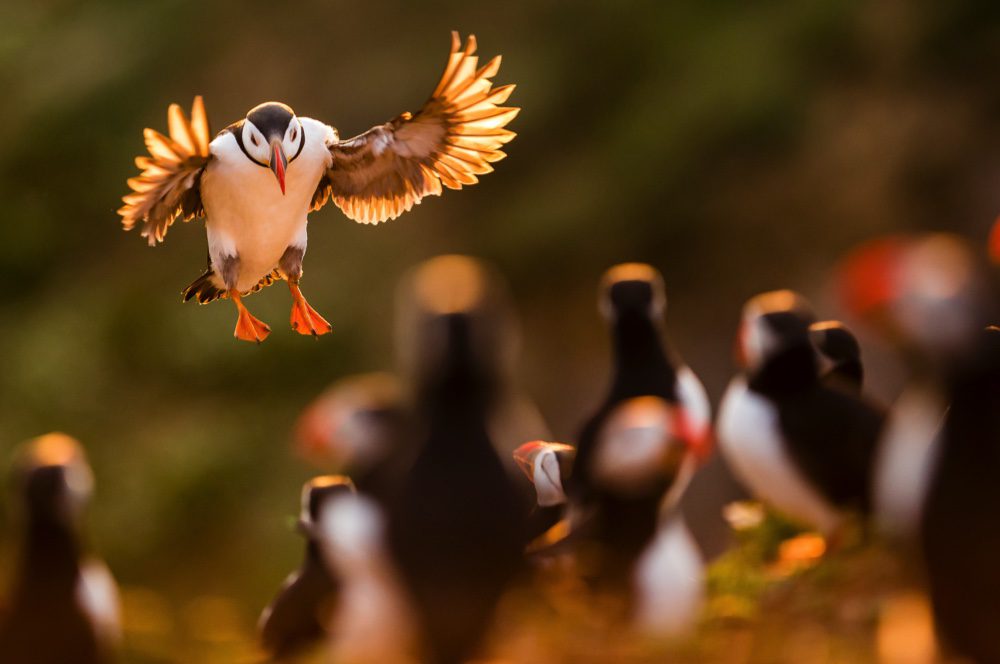
Seabird colonies are always bustling, whether it’s puffins reaffirming old bonds, collecting nesting materials or returning from their fishing grounds with a mouthful of sand eels. If you’re new to puffin photography, arriving at a colony for the first time can feel a bit overwhelming. So take a moment, step back and simply take it all in. Doing this allows me to observe the birds: what flight paths they take, which puffins are bringing sand eels back to their burrow, and so on. Try not to rush into the situation. It’s easy to focus on the first puffin you see, but if you do, you risk missing the action around you. Enjoy the sights and sounds of the colony – even the smells (surprisingly for seabirds, puffins don’t have a distinct odour). This will hugely improve your chances of capturing unique images of these charismatic little birds.
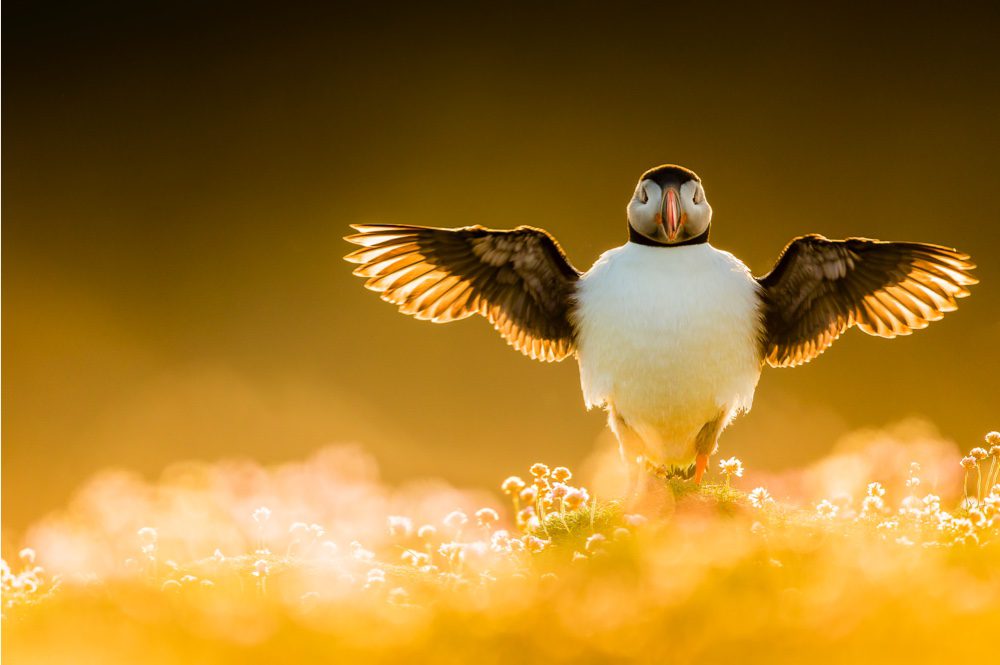
Each photographer has their own style. I like to work on long-term projects with individual species. I understand that spending extended periods on an island photographing puffins isn’t possible for everyone, but this advice applies to all wildlife photography. Only by putting in the time and watching a species can you begin to understand its intimate traits and behaviours, which will in turn help your photography. Each moment spent observing is time well spent. For example, with puffins, if you notice them take a sharp intake of breath, you know it will be closely followed by a wing stretch. These are only small details, but they greatly improve your chances of capturing interesting behaviour. It’s often said that wildlife photography is largely down to luck, which is true. But the more time you spend in the field, the luckier you’ll become!
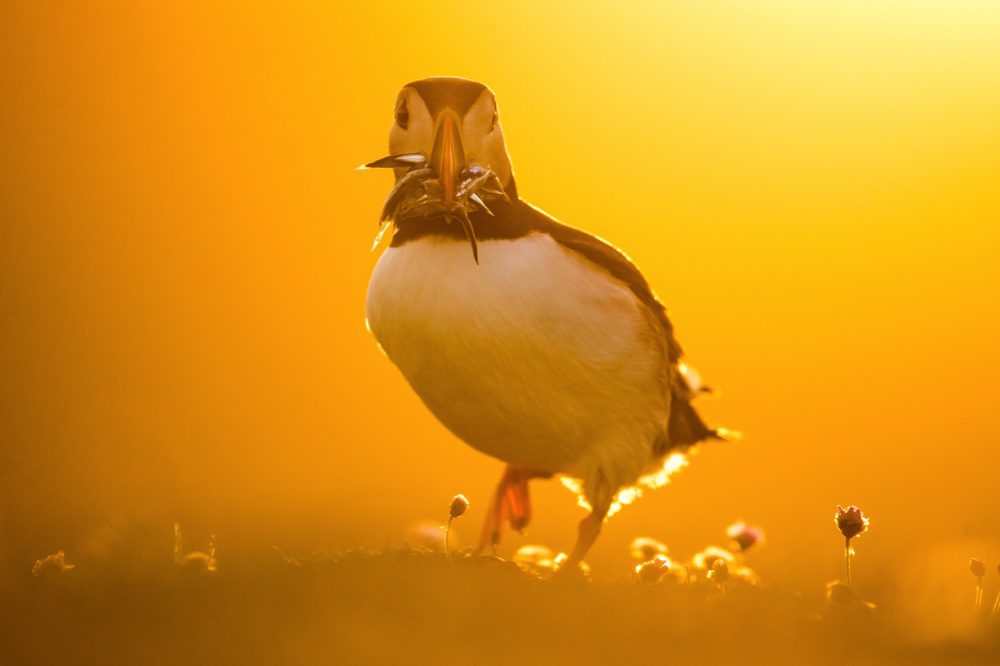
To truly connect with a subject, you must shoot from their perspective. Atlantic puffins see the world from roughly 18cm off the ground, whereas a human’s eye level is at about 150-180cm. Towering over a puffin will very rarely make for a pleasing composition. Ditch the tripod, get on the ground, and shoot from the animal’s perspective. By taking a photo from this standpoint, the viewer will be transported into the bird’s world. This will also produce an intimate portrait, allowing the viewer to connect with the subject. Shooting low can transform an otherwise cluttered scene – it will often allow you to shoot through a diffused foreground and background, and it’ll make your subject pop.
Take action to protect puffins
Visit the Save Our Wild Isles website to find out how you can help to protect and restore UK nature, including our beautiful coastline and its wildlife.
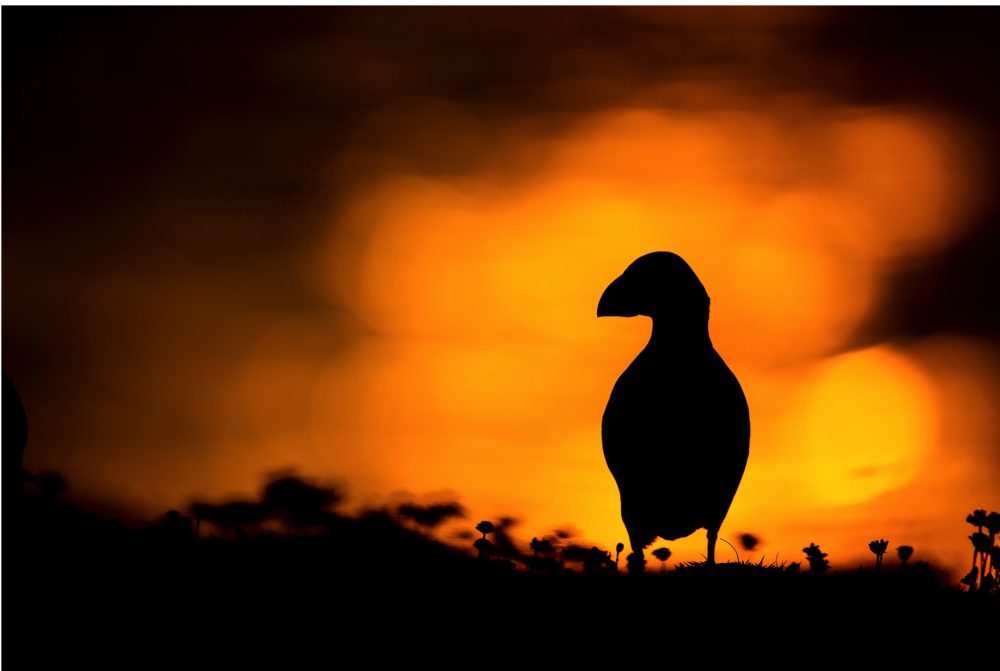
In my photography, the key element is light. A camera is just a tool, but light is what can transform an image into something truly breathtaking. Wildlife photographers are often exposed to the elements and don’t have studio-controlled setups, so we need to understand how light falls and the qualities it possesses. There are many ways to manipulate light to your advantage – I often find myself drawn to dark and moody silhouettes. Playing with light and shadows can be an effective way to transform a scene, creating dramatic silhouettes and images full of darkness and mystery. Silhouettes are simple to create: the light source needs to be directly behind your subject, and you should expose for the brightest part of the image. Typically, this will be your background, resulting in an underexposed subject and, as a result, a silhouette. Any subject can be made into a silhouette, but to create a strong image you need an instantly recognisable subject, such as a red deer stag or, in this case, a puffin’s bill.
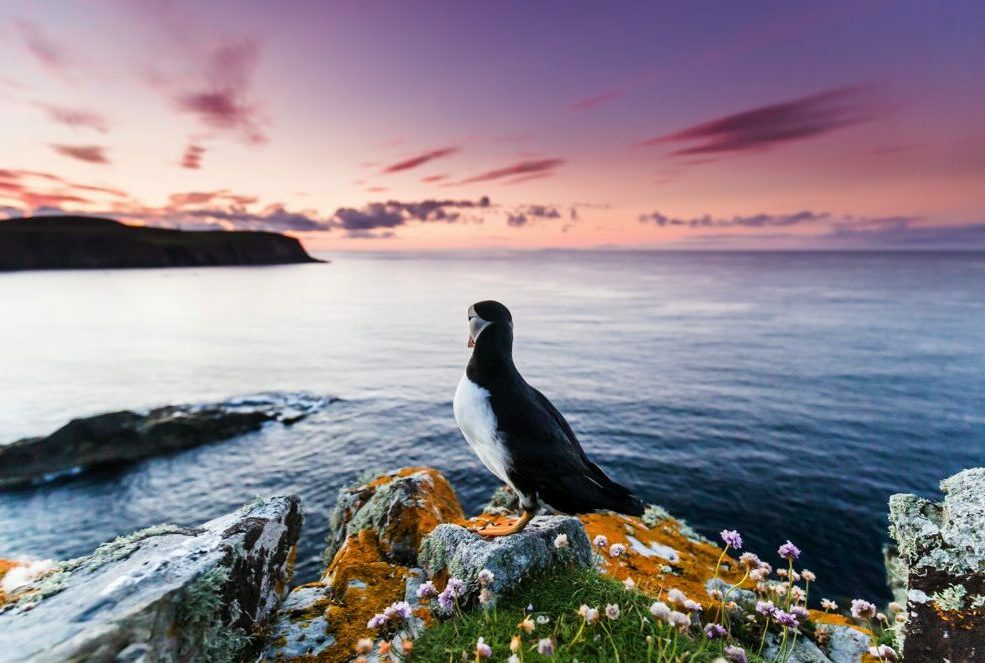
Composition is a crucial element in making your images stand out from the crowd. It affects what you want your image to say. For example, you could shoot the same scene wide, up close, or focusing on the eyes or feet. Each composition tells a different story. With your camera in hand, you’re a visual storyteller – you want to create images that connect the audience with the scene and make them feel like they’re right there with you. Before you press the shutter, think about what story you want to tell. A mistake I often find photographers making when working at puffin colonies is not stepping back and looking at the bigger picture. Seabirds’ habitats are among the most stunning on the planet. Look to combine the two for some standout shots: the beauty of the seabird and its habitat.
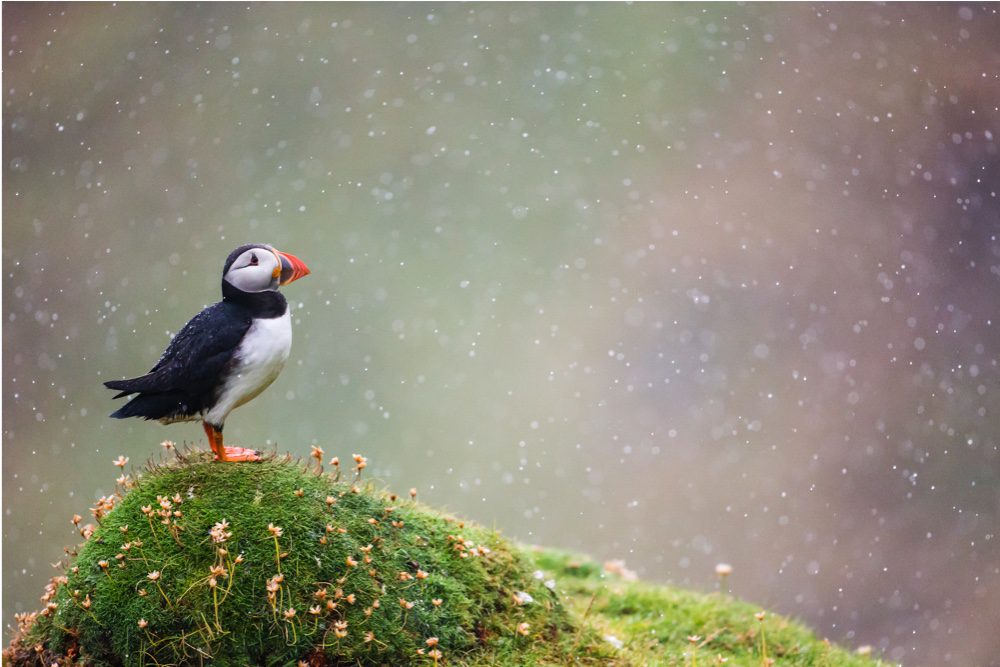
And finally, embrace the weather! If we decide to wait for the golden light in a British summer, we may be waiting a long time. Clouds, rain and fog – this is the norm, particularly on the remote seascapes puffins call home. But don’t get downbeat when the weather isn’t in your favour – embrace it! Often, the best images can be achieved in the worst weather. Shooting in wet weather can come with its own challenges, such as keeping yourself and your kit dry. Keeping yourself dry and warm is vitally important because, in my experience, once you get cold and wet you’ll be thinking about a hot cup of tea and not the photography at hand. The longer you can stay out in the weather, the more chance you have of producing unique imagery.
ALL IMAGES: © KEVIN MORGANS
Discover our wild isles
Puffins are some of the stars of the new BBC natural history TV show Wild Isles, which celebrates the UK’s astonishing wildlife. Find out more!
More to explore
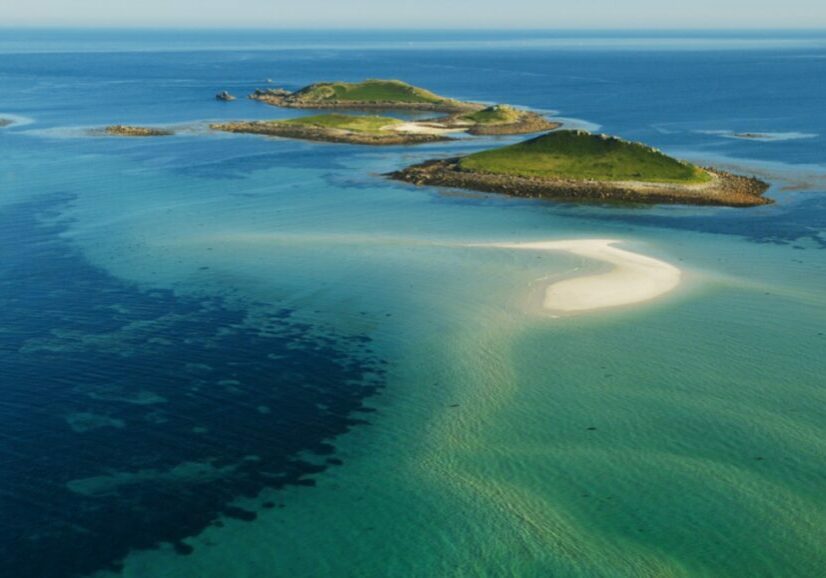
Celebrate our Wild Isles
A new landmark TV series presented by Sir David Attenborough will reveal the unseen beauty of the UK – and there are some surprising sights in store
